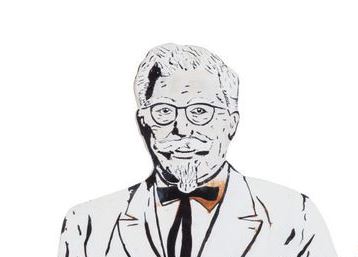A world of Christmas
Christmas traditions, passed down from generation to generation, give people the opportunity to create fun memories and connect to their culture. Wherever Christmas is commemorated, people have created unique ways to celebrate it. This holds true especially in Japan, Iceland, Catalonia and Austria, where quirky, tasty and even spooky traditions keep the festivities merry and bright, as detailed on the website whychristmas.com.
The Japanese have not traditionally celebrated Christmas, where Christians are a minority. Despite this, many Japanese now commemorate the holiday with an unorthodox Christmas day meal: Kentucky Fried Chicken. Starting in 1974, KFC marketed its products during the holiday season to fill the lack of Christmas traditions, making KFC synonymous to Christmas in Japan.
The Japanese ate it up, literally and figuratively. People now end up waiting in long lines to get their KFC Christmas meals if they don’t pre-order early enough. They pick from the classic KFC “Christmas Barrel,” which includes chocolate cake, salad and fries along with the chicken, or splurge on a whole roasted chicken and KFC branded beers.
Christmas in Iceland can be chaotic. To start with, children are visited by not one, but thirteen different Father Christmases. Known affectionately as the Yule Lads, these mischievous troll-like figures are said to take turns visiting children over the thirteen nights leading up to Christmas and place candy in their shoes if they’ve been nice, or rotten potatoes if they’ve been naughty.
Parents remain diligent in their candy gifting over the two weeks leading up to Christmas to keep this folktale alive. Each of the Yule Lads has its own unique personality and background. Depending on what night it is, you might encounter Stubby, Door Sniffer or even Sausage Swiper.
If you’re looking to experience the most outlandish of Christmas traditions, consider a trip to the Catalonia region of Spain. There you’ll find Tio de Nadal, the Christmas log. Made from a hollowed-out log decorated with stick legs, a painted smiling face and a red hat, Tio de Nadal is widely available in stores beginning in late November. Everyday from Dec. 8 to Christmas Eve, children feed the log treats such as tangerines, nuts and candy and keep him cozy under a blanket.
When Christmas Eve arrives, things get a little weirder. Children beat the log with sticks while singing traditional songs to encourage the log to discharge presents, place a blanket over it, then go to another room to say prayers. When the children come back, the blanket is lifted to reveal presents for the kids and candy such as nougat. Finally, the log is thrown in the fireplace to provide warmth.
Logs became part of Catalan Christmas culture because they represented the gifts of warmth and light. Later on they were incorporated into the Catalonian nativity scene. While the Three Wise Men are associated with big presents, the log is supposed to provide small trinkets and sweets. Overtime, the log was given a face and legs and detached completely from the nativity scene, becoming an independent tradition.
In other parts of the world, Santa Claus’ dark counterpart, Krampus, plays a major role at Christmas time. Krampus, a half-demon, half-goat beast who beats naughty children into being nice, originated in Germany as a fairy tale told to discipline children. While he can be found throughout much of Europe, in Austria, the local rendition brings this myth to life. Every year on Dec. 5, known as Krampusnacht or Krampus Night, young men get drunk and prowl the streets dressed as the monster. Those looking for fun spend the night being chased all over town by these costumed celebrators.
Other cities hold Krampus Parades and stage a Halloween-like festival to celebrate the demon. Either way, the next morning on Nikolaustag, or St. Nicholas Day, children will see if they’ve been left presents (for good behavior) or a rotten potato (courtesy of Krampus).
Your donation will support the student journalists of Diamond Bar High School. Your contribution will allow us to purchase equipment and cover our annual website hosting costs.









